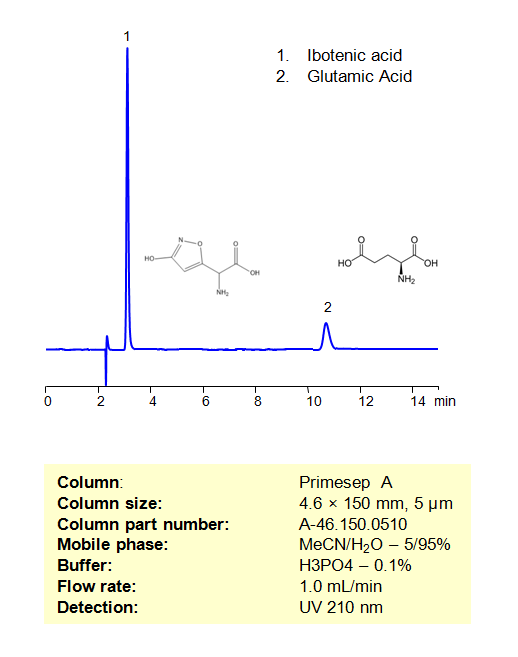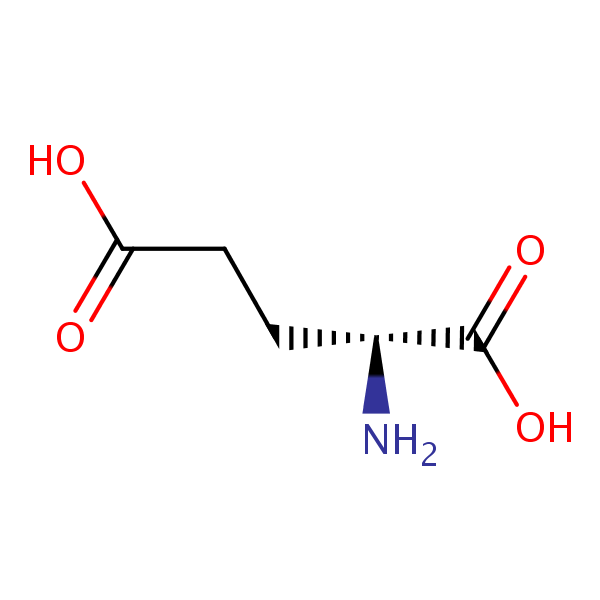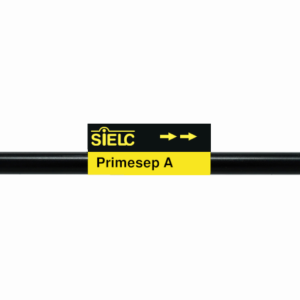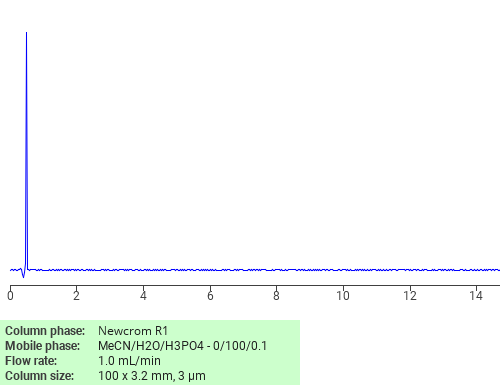| CAS Number | 6893-26-1 |
|---|---|
| Molecular Formula | C5H9NO4 |
| Molecular Weight | 147.131 |
| InChI Key | WHUUTDBJXJRKMK-GSVOUGTGSA-N |
| LogP | -2.77 |
| Synonyms |
|
Applications:
HPLC Method for Separation of Ibotenic Acid and Glutamic Acid on Primesep A Column
February 28, 2023
HPLC Method for Separation of Ibotenic Acid and Glutamic Acid on Primesep A by SIELC Technologies
Separation type: Liquid Chromatography Mixed-mode

Ibotenic acid is a physchoactive NDMA and metabotropic glutamate receptor agonist with neurotoxic properties. These structurally similar psychoactive drugs can be retained, separated, and analyzed on a mixed-mode Primesep A column with a mobile phase consisting of water, Acetonitrile (MeCN), and Phosphoric acid (H3PO4). This analytical method can be UV detected at 210 nm with high resolution and peak symmetry.
High Performance Liquid Chromatography (HPLC) Method for Analysis of Ibotenic Acid and Glutamic Acid
Condition
| Column | Primesep A, 4.6 x 150 mm, 5 µm, 100 A, dual ended |
| Mobile Phase | MeCN/H2O – 5/95% |
| Buffer | H3PO4 – 0.1% |
| Flow Rate | 1.0 ml/min |
| Detection | UV 210 nm |
| Peak Retention Time | 3.22 min, 10.52 min |
Description
| Class of Compounds | Acid |
| Analyzing Compounds | Ibotenic Acid, Glutamic Acid |
Application Column
Primesep A
Column Diameter: 4.6 mm
Column Length: 150 mm
Particle Size: 5 µm
Pore Size: 100 A
Column options: dual ended
GLU (L-Glutamic acid)
Glutamic Acid
Ibotenic acid
L-Glutamic acid hydrochloride

Separation of D-Glutamic acid on Newcrom R1 HPLC column
February 16, 2018
D-Glutamic acid can be analyzed by this reverse phase (RP) HPLC method with simple conditions. The mobile phase contains an acetonitrile (MeCN), water, and phosphoric acid. For Mass-Spec (MS) compatible applications the phosphoric acid needs to be replaced with formic acid. Smaller 3 µm particles columns available for fast UPLC applications. This liquid chromatography method is scalable and can be used for isolation impurities in preparative separation. It also suitable for pharmacokinetics.
Application Column
Newcrom R1
The Newcrom columns are a family of reverse-phase-based columns. Newcrom A, AH, B, and BH are all mixed-mode columns with either positive or negative ion-pairing groups attached to either short (25 Å) or long (100 Å) ligand chains. Newcrom R1 is a special reverse-phase column with low silanol activity.
Select options



